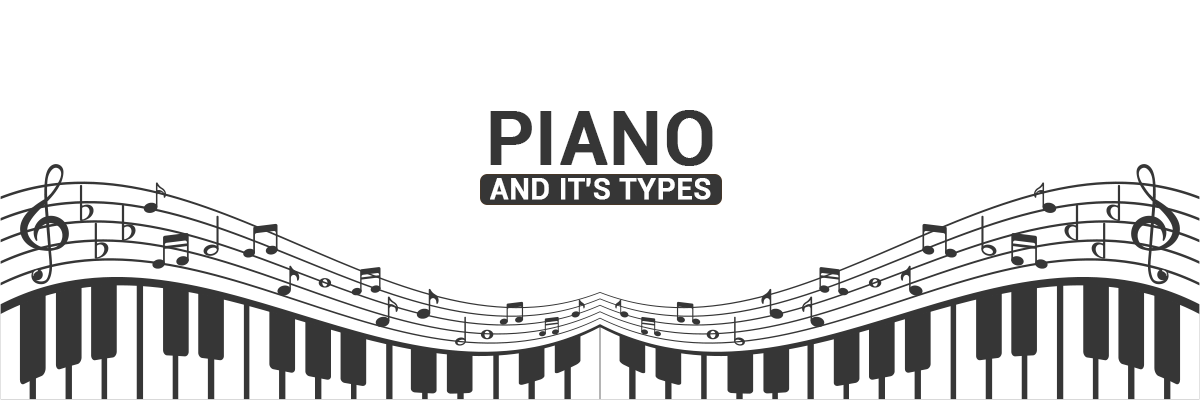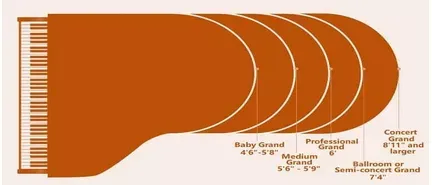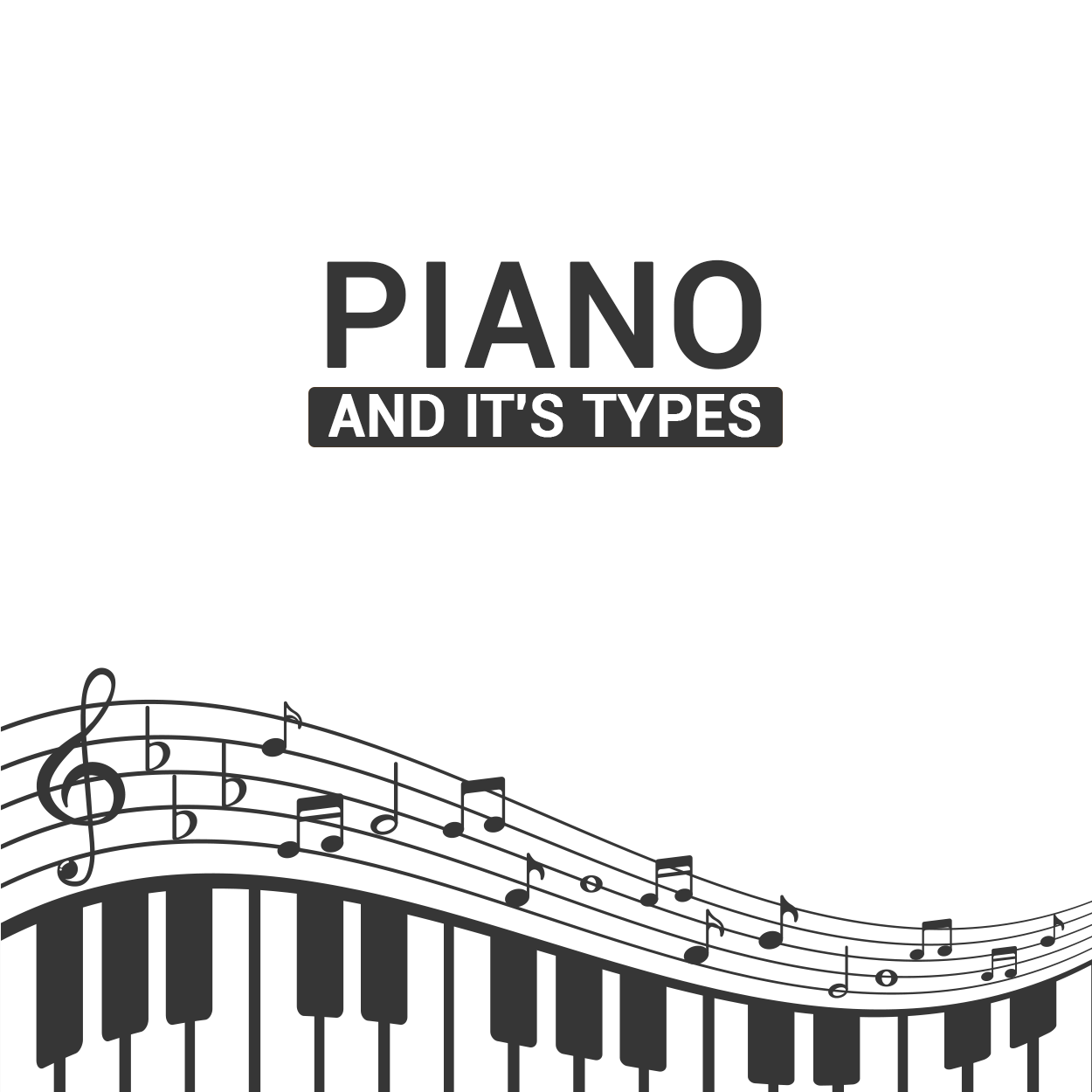
The Piano was invented by Bartolomeo cristofori(1655-1731) of Italy. He is credited for switching out the plucking mechanism with a hammer to create the modern piano in around the year 1700. The instrument was actually named as “clavivcembalo col piano e forte” (means “a harpsichord that can play soft and loud noises”). This was shortened to the common name “Piano”. The piano is noted as one of the best instruments to begin learning how to play from, mainly due to the ease of locating notes and identifying chords. There are many types and sizes in pianos, however, that also varies in sound, size, and type, and also have different feel in playing.
The pianos are mainly distinguished by 2 different types, they are
- Horizontal and
- Vertical Pianos
Horizontal pianos:
These are also called the grand pianos, because of their length and the placement of strings. They produce much finer tones due to their construction. When you press the keys on these pianos, the hammer hits the strings from the below and then falls back, but it makes the sound of the notes very crisp and gives the pianist better control over the keys.
In horizontal pianos, there are different kinds of grand pianos, they are
- The Petite grand
- The baby grand
- The medium grand
- The parlor grand
- The ballroom grand
- The concert grand
Petite Grand:
The smallest of horizontal pianos, the petite grand still produces a very powerful sound that is impressive for musicians. Its size is usually around 4 feet, 5 inches, but can go as much as 4 feet, 10 inches in height.
The baby grand:
The next up from the petite, the Baby Grand measures around 4 feet 11 inches to 5 feet 6 inches in height. The baby grand is a popular piano for pianists, mainly due to its impressive tonal quality, but it also has an eye-pleasing aesthetic and is affordable for many.
The Medium Grand:
This Piano is larger than the Baby Grand, approximately 5 feet 7 inches. The size of the sound board and the length of the strings influence the tonal quality of a piano.
The Parlor Grand:
Next up in the size, the parlor grand piano stands at 5 feet 9 inches to 6 feet 1 inch in height. It is often referred to as the ‘living room’ Piano.
The Ballroom Piano:
This Piano is also called the ‘Semi concert’ Grand and goes from 6 feet 2 inches to 6 feet 7inches high.
The Concert Grand:
This is the largest of all the Grand pianos with a height of 9 feet.

Vertical Pianos:
The following are the vertical pianos because of their height, and the position of their strings:
- The upright
- The spinet
- The console
- The studio
The Upright piano:
The Upright is the tallest of the vertical pianos, ranging from 50 to 60 inches and an approximate width of about 58 inches. It has a very rich tone and stands the test of as a very durable piano. It keeps a strong sound for many years as long as it is properly maintained.
The Spinet:
Spinets are the smallest of the Uprights. The height is only a maximum of 38 inches and a width of around 58 inches. It is a great choice for those who have limited space in their home, apartment to fit such an instrument. Be cautious if considering this type of piano because spinets are known to lose accuracy and have less power due to their construction, and also can cost more when repairing.
The Console:
Console pianos are slightly bigger than spinets, ranging from 40 to 43 inches and 58 inches wide. You can get a Console piano in a wide variety of styles and finishes. This probably also aids its popularity, as it is the most favourite of all the Uprights. The sound of the Console provides more direct action, the hammers are in an upright position and sitting directly over the keys. When the hammer comes down, a string pulls the hammer back into place to b ready to strike again, producing a more enhanced tone
The studio:
The studio pianos are bigger than consoles, their height is around 45 to 48 inches and width of 58 inches. It has a larger sound board and strings, so it has richness in the tone quality that is comparable to grand pianos. Many of the studio pianos that you will find today are very similar in sound to the grand pianos.

It’s not just the size that changes with pianos. Most Pianos have the signature 88 keys to play, but manufacturers have actually added extra keys to ‘open up’ new sounds and melodies. This could possibly create a whole new type of piano. This could create a whole new type of piano. Another change you might discover with pianos is that the number of pedals differs if you are in Europe, in America, there are standard pedals of three, but in Europe, there are usually just two.
Maybe you would like the idea of having your choice of finishes and go for a Console, or maybe if you want to go with a fuller sound of having a Grand Piano and get the Baby Grand. If you have limited space though, it’s worth looking into possibly going for the spinet or a petite. Whatever your choice in Piano, there are numerous options to choose from. The instrument has evolved in many ways, and now you should have a better idea of the various types and sizes they come in.
